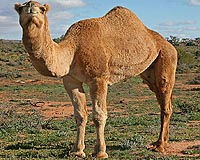 |
Oeygarden, Norway (AFP) June 22, 2009 Tucked away in the corner of an enchanting fjord, 600,000 baby trout frolick in underwater cages as they wait their turn to end up on dinner plates: fish farming is booming in Norway, under the watchful eye of environmentalists. In Oeygarden near the western Norwegian town of Bergen, the Blom family's fish farm consists of a building constructed on the water and three submerged basins where the fish are raised. It is just one of the 800 fish farms dotting the coastline in the Scandinavian country, where three times more salmon and trout are produced than meat. But while fish farming helps ease the pressure that industrial fishing is putting on the planet's fish stocks, it is not without its own slew of problems. Farmed fish that escape, rampant illnesses and a debate over feed have tarnished the reputation of a sector whose exports totalled 2.5 billion euros (3.5 billion dollars) in Norway last year. "In some areas the problems are so big that we cannot certify that it is (environmentally) sustainable. We should chill down the growth and make sure that all the main problems are under control," says Geir Lasse Taranger, research program manager at Bergen's Institute of Marine Research. Heavy concentrations of fish encourage the spread of diseases and parasites that can have a disastrous effect on stocks, such as Lepeophtheirus salmonis, a louse that attacks fishes' skin and mucous membranes. In Chile, the second-biggest producer of farmed salmon after Norway, a virus that emerged earlier this year devastated stocks and halved production, putting 20,000 people out of work, according to the international environmental group Pure Salmon Campaign. The problems are not limited to the fish farms. Many of the farmed fish escape from their cages and contaminate the wild salmon, thereby weakening the stocks' genetic makeup. "The wild genotype will disappear if there are too many escapes," Taranger said. Fish farms saw a peak of 920,000 salmon escapes in 2006, prompting the industry to roll up its sleeves and tackle the problem. Divers who inspect the cages' nets as well as video cameras helped bring the number of escapes down to just 100,000 last year. The industry's woes haven't ended with that, though. Fish farmers feeding practices have also landed them in the hot seat. A recent Swedish documentary created a stir in Scandinavia when it accused Norwegian fish farms of emptying the oceans. In order to produce one kilogramme (2.2 pounds) of farmed fish, the equivalent of 2.5 kilogrammes of wild fish in meal and oil are needed. Norway's farms, which produced just over 800,000 tonnes of fish last year, consumed 2.0 million tonnes of wild fish. But professionals say their practices are among the best in the food industry. "Salmon and trout are very efficient in the use of proteins, much more so than chicken, pork or beef" which require more feed per kilogramme produced, insists Oeyvind Blom, who runs the family farm in Oeygarden. "So it's very sustainable and environmentally friendly in our view," he says. But environmentalists, who are generally favourable to fish farming, still want to see an improvement. "We're not concerned about the ratio between the quantity of feed and the final product. What worries us is what the feed is made of," says Nina Jensen, a marine biologist at World Wide Fund for Nature (WWF) Norway. She says some of the fish meal and oil are derived from wild fish stocks that are vulnerable, such as sand eel, Icelandic mackerel and Norway pout. The WWF has therefore called for the feed contents to be traceable so that producers know which fish were used in the process. "We know it for any other farmed animal, so why not farmed fish," asks Jensen. Share This Article With Planet Earth
Related Links Farming Today - Suppliers and Technology
 Eat a camel, save Australia
Eat a camel, save AustraliaAlice Springs, Australia (UPI) Jun 18, 2009 Australians are being urged to eat a camel to save the country's desert resources that are even scarcer because of continuing drought conditions. An academic from Charles Darwin University wants people to develop a taste for wild camel meat and dine on it at least once every two weeks, a report in the Courier Mail newspaper stated. This would cut down on the more than 1 million ... read more |
|
| The content herein, unless otherwise known to be public domain, are Copyright 1995-2009 - SpaceDaily. AFP and UPI Wire Stories are copyright Agence France-Presse and United Press International. ESA Portal Reports are copyright European Space Agency. All NASA sourced material is public domain. Additional copyrights may apply in whole or part to other bona fide parties. Advertising does not imply endorsement,agreement or approval of any opinions, statements or information provided by SpaceDaily on any Web page published or hosted by SpaceDaily. Privacy Statement |